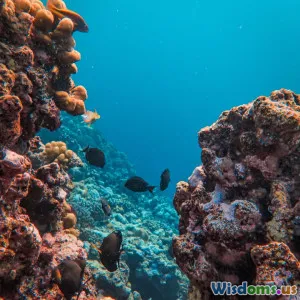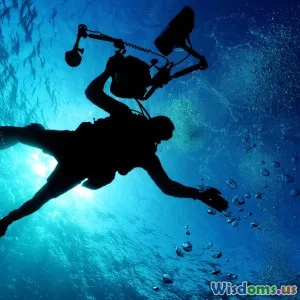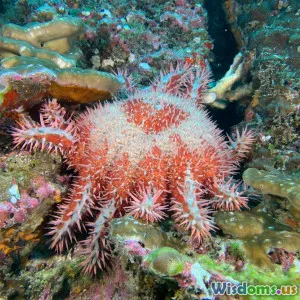
A Close Look at Coral Bleaching and What Divers Can Do to Help
9 min read Explore the causes of coral bleaching and practical actions divers can take to protect fragile reefs and ensure their survival. (0 Reviews)
A Close Look at Coral Bleaching and What Divers Can Do to Help
Introduction
Imagine descending beneath the waves into a kaleidoscope of vibrant coral reefs teeming with marine life—a natural underwater city bustling with color and diversity. Now, imagine those reefs turning ghostly white, their colors fading like bleach from fabric left too long in the sun. This haunting phenomenon is known as coral bleaching, a disturbing sign of a fragile ecosystem in distress.
For divers—the ambassadors of the underwater world—understanding coral bleaching is critical. Not only does it signify a global environmental crisis, but it also threatens the very reefs divers explore and cherish. This article dives deep into the science behind coral bleaching, its far-reaching impacts, and perhaps most importantly, how divers can turn their passion for the ocean into purposeful action.
Understanding Coral Bleaching
What is Coral Bleaching?
Coral bleaching occurs when corals, stressed by environmental factors, expel the symbiotic algae (zooxanthellae) living in their tissues. These algae provide corals with color and crucial nutrients through photosynthesis, granting up to 90% of their energy. Loss of these algae leaves corals white or "bleached" and vulnerable to starvation.
Causes of Coral Bleaching
While various stressors can trigger bleaching, climate change stands out as the primary culprit due to rising sea temperatures. Corals thrive within a narrow temperature range—typically between 23⁰C and 29⁰C (73⁰F to 84⁰F). Sustained temperature rises as slight as 1-2⁰C above the usual summer maximum can initiate bleaching events.
Other contributors include:
- Ocean Acidification: Increased CO2 absorption lowers pH levels, weakening coral skeletons.
- Pollution: Runoff carrying chemicals, sediments, or nutrients disrupts coral metabolism.
- Overexposure to Sunlight: UV radiation intensifies stress, especially during calm, warm conditions.
- Disease: Pathogens may exacerbate coral vulnerability.
Global Impact: The Scale of Bleaching
The 2016 and 2017 global bleaching events were the worst recorded, affecting over 75% of the world's coral reefs. Iconic reefs like Australia's Great Barrier Reef experienced severe bleaching; surveys showed a 50% decline in living coral cover in some zones. The World Wildlife Fund (WWF) estimates that 70–90% of the Great Barrier Reef has suffered bleaching-related damage in recent decades.
Ecological and Economic Consequences
Effects on Marine Ecosystems
Coral reefs support roughly 25% of all marine species despite covering less than 1% of the ocean floor. Bleaching disrupts this biodiversity hotspot, causing:
- Loss of Habitat: Fish and invertebrates lose shelter and feeding grounds.
- Food Web Disruptions: Species dependent on corals face starvation.
- Decreased Reef Resilience: Damaged corals reproduce less effectively.
Economic Impact
Reefs generate billions annually through fisheries, tourism, and coastal protection. The Global Coral Reef Monitoring Network estimated that coral reefs provide ecosystem services worth $30 billion to $375 billion each year. Bleaching-induced reef degradation jeopardizes livelihoods, particularly in tropical island nations reliant on marine tourism.
What Divers Can Do to Help
Divers form a vital constituency for reef conservation. Their direct experience with underwater ecosystems positions them uniquely to foster stewardship. Here are actionable steps divers can embrace:
1. Practice Responsible Diving
- Maintain Buoyancy Control: Avoid contact with fragile corals. Even gentle touches can damage polyps.
- Avoid Kicking Up Sediment: Stirring up sediment clouds water, blocking sunlight essential for coral photosynthesis.
- Use Reef-Safe Sunscreens: Some common sunscreen chemicals harm corals. Look for mineral-based formulations without oxybenzone or octinoxate.
- Don’t Collect or Disturb Marine Life: Removing coral or animals disrupts the ecosystem balance.
2. Support Coral Reef Conservation Organizations
Some divers take their interest beyond individual practice by supporting groups such as:
- Coral Restoration Foundation: Working to rebuild degraded reefs through coral farming.
- Reef Check: Promoting citizen science with dive volunteers monitoring reef health.
- Project AWARE: Advocating for ocean protection policies.
3. Participate in Citizen Science
Training programs allow divers to contribute valuable reef data.
- At locations worldwide, Reef Check volunteers document bleaching, coral diversity, and pollution.
- The CoralWatch program uses a color chart to assess coral bleaching severity, accessible even to beginners.
4. Educate and Advocate
Divers are often trusted voices in their communities.
- Share firsthand experiences from diving trips, raising awareness about bleaching.
- Influence local decision-makers to regulate coastal development or pollution.
- Promote sustainable tourism that benefits reefs and local communities.
5. Support Sustainable Fisheries and Marine Protected Areas (MPAs)
Healthy coral reefs depend on balanced fish populations. Supporting seafood sourced responsibly minimizes overfishing.
MPAs establish safe zones where reefs recover free from extractive pressures. Divers can promote MPA establishment and comply with regulations that protect these areas.
6. Engage in Coral Restoration Activities
Some dive operators and conservation groups offer reef restoration dives involving:
- Transplanting nursery-grown coral fragments.
- Removing invasive species harmful to reef balance.
This hands-on involvement deepens connection and generates real ecological benefits.
Inspiring Examples
- The Great Barrier Reef Volunteer Dive Program: Over 10,000 citizen scientists aiding reef monitoring.
- Biorock Projects in Indonesia: Using low voltage to stimulate coral growth, divers regularly assist planting efforts.
- Red Sea Conservation Efforts: Divers help combat bleaching by mapping vulnerable coral hotspots and fostering responsible tourism.
As Dr. Enric Sala, oceanographer and National Geographic Explorer-in-Residence, asserts: "Healthy coral reefs are critical to marine biodiversity and resilient coastal communities. Divers—by being informed and active—become frontline heroes in protecting these underwater rainforests."
Conclusion
Coral bleaching represents one of the most visible and urgent warnings of our oceans’ changed health under climatic stress. Yet, it is not merely a tale of loss; it also signals a call to action, especially for those who venture below the surface.
Divers, armed with knowledge and a commitment to responsible stewardship, can profoundly influence the recovery and preservation of coral reefs. Through mindful diving practices, participatory science, advocacy, and supporting restoration, divers help keep the underwater world vibrant and resilient.
The next time you dive among corals, remember you are part of a global effort to safeguard these spectacular ecosystems—not just as an observer, but as an empowered custodian of the sea.
References:
- Hughes, T.P., et al. (2017). Global warming and recurrent mass bleaching of corals. Nature.
- Global Coral Reef Monitoring Network (GCRMN).
- Coral Restoration Foundation event reports.
- National Oceanic and Atmospheric Administration (NOAA) Coral Reef Conservation Program.
- Reef Check International volunteer data archives.
_
This article aims to educate and inspire divers and ocean enthusiasts to protect the fragile coral reef ecosystems vital to marine biodiversity and coastal economies.
Rate the Post
User Reviews
Popular Posts



















